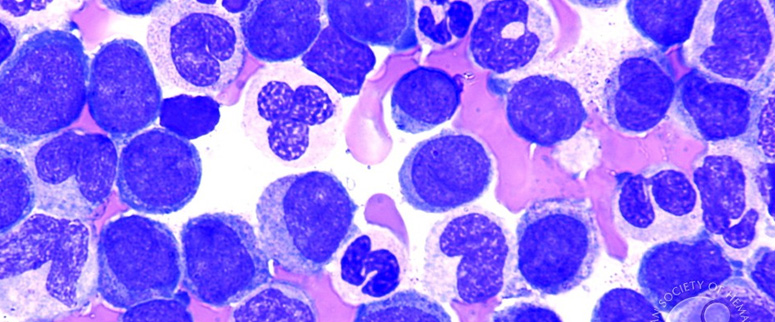|
What Is Acute Myeloid Leukemia?
Acute myeloid leukemia starts in the bone marrow. This is the soft inner parts of bones. With acute types of leukemia such as AML, bone marrow cells don't mature the way they're supposed to. These immature cells, often called blast cells, just keep building up.
You may hear other names for acute myeloid leukemia. Doctors may call it:
• Acute myelocytic leukemia
• Acute myelogenous leukemia
• Acute granulocytic leukemia
• Acute non-lymphocytic leukemia
Without treatment, AML can quickly be fatal. Because it's "acute," this type of leukemia can spread quickly to the blood and to other parts of the body such as the following organs:
• Lymph nodes
• Liver
• Spleen
• Brain and spinal cord
• Testicles
The expected outcome for acute myeloid leukemia depends on certain factors. And of course, prognosis is better if your leukemia responds well to treatment. Your outlook is better if:
• You are younger than age 60
• You do not have a history of blood disorders or cancers
• You do not have certain gene mutations or chromosome changes

Risk Factors for Acute Myeloid Leukemia
If something increases your risk of getting a disease, it's called a risk factor. Risk factors don't tell the whole story. For example, you can have few risk factors and still get a disease or have several and not get it.
Acute myeloid leukemia risk factors include:
• Smoking
• Exposure to certain chemicals such as benzene (a solvent used in oil refineries and other industries and present in cigarette smoke), certain cleaning products, detergents, and paint strippers
• Treatment with certain chemotherapy drugs used to treat other cancers, such as mechlorethamine, procarbazine, and chlorambucil -- especially when combined with radiation therapy
• Exposure to high doses of radiation
• Certain blood disorders, such as myeloproliferative disorders (for example, chronic myelogenous leukemia)
• Certain congenital syndromes, such as Down syndrome
• Being male
AML can cause a variety of signs and symptoms. Since the symptoms are often vague, they could be caused by other conditions. Symptoms include:
• Fatigue
• Fever
• Loss of appetite or weight
• Night sweats
Many symptoms of acute myeloid leukemia are the result of a shortage of normal blood cells. That's because leukemia cells crowd out normal cells in the bone marrow.
A shortage of red blood cells may cause symptoms of anemia including:
• Fatigue or weakness
• Dizziness
• Feeling cold
• Light-headedness
• Headaches
• Shortness of breath
A shortage of normal white blood cells may result in:
• Recurring infections
• Fevers
A shortage of blood platelets may cause symptoms such as:
• Lots of bruising for no clear reason
• Frequent or severe nosebleeds, bleeding gums, or other unusual bleeding, such as from minor cuts
Depending upon where leukemia cells are present, other symptoms may include:
• Bone or joint pain
• A full or swollen belly from leukemia cells in the liver or spleen
• Lumps or rashes in the skin
• Swollen, painful, bleeding gums
• Headache, trouble with balance, vomiting, seizures, or blurred vision
• Enlarged lymph nodes such as in the neck or groin, under arms, or above the collarbone (rare)

Treatment for Acute Myeloid Leukemia
Because AML is a group of related diseases, treatment depends upon each subtype as well as on other factors. It is important to start treatment as soon as possible after diagnosis.
You may have more than one type of treatment, including:
• Chemotherapy, the use of anticancer drugs -- often two or three -- such as cytarabine, anthracycline drugs, 6-thioguanine, hydroxyurea, or prednisone
• Radiation therapy, the use of high-energy radiation to kill cancercells; this is not used often for AML, but may be used to treat leukemia in the brain, bone, or testicles; before a stem cell transplant; or, in rare cases, to shrink a tumor that's pressing on the windpipe.
• A bone marrow transplant, which involves use of high doses of chemotherapy and possibly radiation, followed by a transplant of bone-forming stem cells; Stem cells usually come from a donor, or, less likely, from your own bone marrow or peripheral blood. If you cannot tolerate high doses of chemotherapy and radiation, lower doses may be used with a "mini-transplant."
|